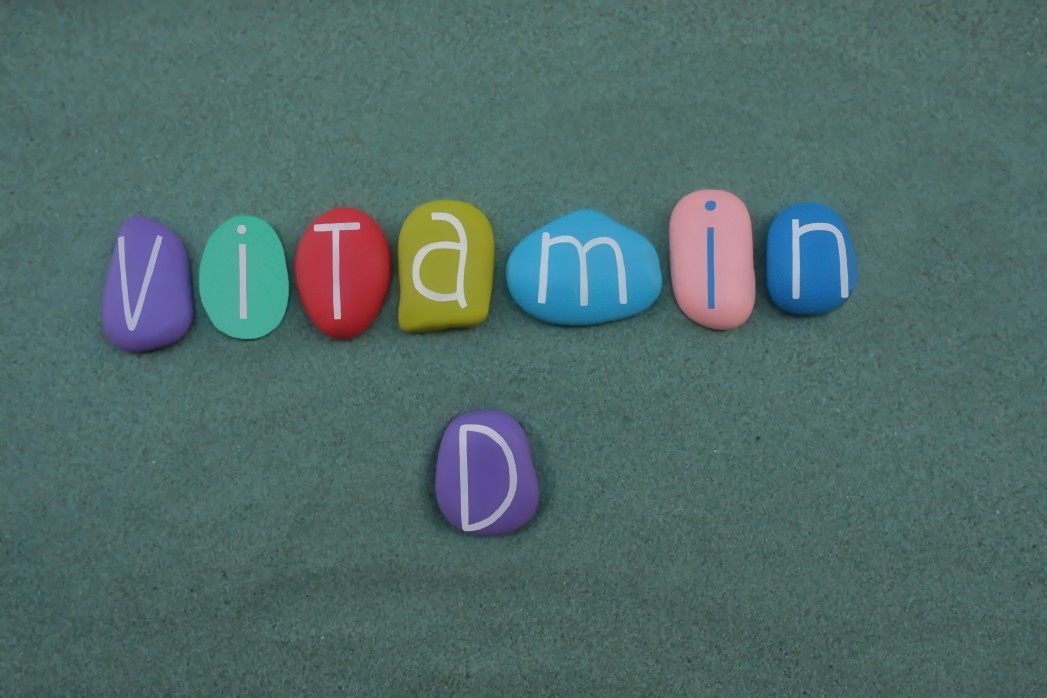Did you know that an estimated 1 billion people worldwide have low levels of Vitamin D in their blood?
And did you know that Vitamin D isn’t really a Vitamin at all?
It’s a prohormone—and prohormones are substances that your body will convert into a hormone. And because of that, unlike vitamins, every cell in your body has a receptor for it.
This also means that it must be broken down from the initial form into a form your body can use. Vitamin D is then circulated throughout the body and in turn, it serves many important functions.
This so-called “vitamin” is essential in many of your body’s functions, especially your skeletal system because it supports bone growth and promotes muscle health.
In this special report, we’ll take a close look at why Vitamin D is essential, the causes of Vitamin D deficiency—as well as symptoms you should look out for—and what you can do to make sure you are getting enough.
Why You Need Vitamin D
Vitamin D is essential for strong bones, especially as we grow older. It helps your body take calcium from the blood and use it to produce and repair bone and muscle tissue.
It also helps your body regulate calcium levels in the blood.
The most common type of Vitamin D deficiency, of course, is rickets. This is a childhood condition in which bone tissue never mineralizes properly, and the bones become soft and deformed.
However, modern research has been revealing many other health problems that proper Vitamin D levels can help protect against. We’ll talk about those later in this report.
Vitamin D also helps with the immune system. Immune cells have a receptor for Vitamin D and can synthesize the active Vitamin D metabolite or hormone, so there’s a definite connection between them.
A deficiency in Vitamin D is often associated with increased autoimmune disorders like multiple sclerosis or rheumatoid arthritis. If you have enough Vitamin D in your blood, your immune system will work as designed to keep you from coming down with infections or autoimmune disorders.
Finally, Vitamin D helps the parathyroid gland, which is the one that regulates the amount of calcium in the blood.
Vitamin D helps communication between the intestines, kidneys, and skeleton so that your calcium levels are appropriate. If you have enough calcium in your blood, Vitamin D will help your body use that to form and strengthen your bones.
However, if you don’t have enough calcium, or if the Vitamin D levels are low, the parathyroid gland “borrows” it from the skeleton, weakening your bones.
Causes of Vitamin D Deficiency
There are several reasons why you may be struggling with a Vitamin D deficiency. In fact, as mentioned in that the start of this report, over 1-billion people are Vitamin D deficient.
Unfortunately, it isn’t always easy to detect, especially if you aren’t familiar with the symptoms. Let’s take a quick look at some of the reasons why this can happen:
You don’t eat the kind of foods that support the development of Vitamin D.
Most of these foods are animal-based, like fish and fish oils, beef liver, egg yolks, and fortified milk products.
If you’re vegan, of course you don’t eat these foods, so you’re likely to suffer from a Vitamin D deficiency unless you consume supplements to make up for it.
Your skin color is very dark.
The pigment (melanin) that makes your skin tan or dark reduces your skin’s ability to form Vitamin D when exposed to sunlight. So, the darker your skin, the less likely it is to make Vitamin D even if you sunbathe.
Your sunlight exposure is limited.
Since your skin only makes Vitamin D when exposed to sunlight, you may be likely to have a deficiency if you don’t frequently go outside.
If you’re homebound, for example, or work in a job that prevents sun exposure, you are at greater risk.
Living in northern latitudes can also do it, as can wearing long robes and head coverings for religious reasons.
Smog or pollution can prevent you from getting enough sunlight. Even the season and time of day matters. Sunlight is strongest between 10:00 am and 3:00 pm. And if you like somewhere like Cleveland, Ohio, you’re not getting UV-B light for six months out of the year due to the ozone layer and position of the sun.
Your digestive tract is unable to absorb Vitamin D or dietary fat. Some medical conditions, like Crohn’s disease, celiac disease, and cystic fibrosis, can limit your intestine’s ability to actually absorb the Vitamin D you’ve consumed. Since it’s a fat-soluble vitamin, this holds true for absorbing dietary fat as well.
Your kidneys cannot convert Vitamin D to its active form.
As we age, our kidneys slow down, reducing your ability to convert Vitamin D into the active form your body needs. Kidney disease or damage can do the same thing, leading to Vitamin D deficiency.
You are obese.
Fat cells extract Vitamin D from the blood, changing its release into circulation. If your body mass index is 30 or greater, you may be at serious risk for Vitamin D deficiency.
You’ve had weight loss surgery.
Surgeries that reduce the size of the stomach or bypass sections of the digestive system can make it very hard to consume adequate amounts of Vitamin D, along with other vitamins and minerals.
You’ll need to be carefully monitored by your doctor and will probably need to take Vitamin supplements for the rest of your life.
You take certain medications.
There are several medications that can cause Vitamin D deficiency.
These include laxatives, which (obviously) result in Vitamin D and other nutrients being flushed out of the digestive system before they are absorbed and steroids, which reduce calcium absorption and impair Vitamin D metabolism.
Cholesterol-lowering drugs like statins and colestipol (and oral cholesterol-lowering drug) can reduce Vitamin D synthesis because Vitamin D is derived from cholesterol.
Seizure control drugs like phenytoin and phenobarbital and rifampin (a tuberculosis drug) have also been known to affect Vitamin D levels. And orlistat (a weight-loss drug), can reduce Vitamin D absorption.
Additionally, thiazide diuretics like hydrochlorothiazide (HCTZ) and indapamide decrease urinary calcium excretion, so combining these drugs with Vitamin D supplements might cause hypercalcemia.
You’re an older adult.
As we age, our skin’s ability to make Vitamin D from sunlight is lessened. Our kidneys also slow down, so you may have enough Vitamin D in your blood, but your kidneys just can’t change it into an active form your body can use.
Symptoms of Vitamin D Deficiency
There aren’t a whole lot of reliable symptoms of this deficiency, which is why you should have your doctor do a blood test yearly as you age, or if you fit into one of the above categories.
Here are some things you can look for:
Fatigue.
Chronic exhaustion, especially if you fit into one of the above categories, is one of the first symptoms of vitamin D deficiency.
If you’re tired all day, have your doctor check your blood levels (there are also other conditions that cause fatigue, though).
Muscle aches, weakness, or cramps.
In one scientific study, 71% of patients with chronic pain were found to have vitamin D deficiency.
The vitamin D receptor is found in certain cells called nociceptors, which sense pain. One study in rats showed that a deficiency in vitamin D led to pain and sensitivity.
And a few human studies have shown that taking vitamin D supplements have helped people with chronic pain. Remember that aches and pains are your body’s way of signaling there’s something wrong.
Bone and lower back pain.
This would be a sign that you have a severe deficiency or have been deficient for a very long time. Pain results from a huge loss of calcium from the bone tissue, which takes time to develop. See your doctor at once.
Getting frequent infections.
Vitamin D directly interacts with the cells in your body that are responsible for fighting infection. Scientific studies have shown a link between low vitamin D levels and respiratory tract infections like colds, bronchitis, influenza, and pneumonia.
If you find yourself getting sick often, have your doctor check your vitamin D levels.
Slow wound healing.
Test-tube studies suggest that vitamin D increases the levels of compounds in your body that are responsible for forming new skin during wound healing.
It was also found that people with lower vitamin D levels are more likely to have higher levels of inflammatory markers that can get in the way of proper healing.
If you notice you’re not healing well from a wound or surgery, have your doctor check your vitamin D levels.
Mood changes like depression.
Scientists don’t exactly know why vitamin D is associated with depression, but many depressed patients also have low vitamin D levels. The good news is, when you rectify the deficiency, the depression is also lessened a bit.
Hair loss.
Hair loss in women has been linked to low vitamin D levels, but there is little scientific research on this to date.
An autoimmune disease called alopecia areata causes severe hair loss from the head and other parts of the body. This disease is associated with rickets, which we already said was a symptom of severe vitamin D deficiency in children.
Low vitamin D levels may be a risk factor for the disease so have your doctor check your levels if you’re losing hair.
How a Deficiency Affects You
The reality is, if your body isn’t producing sufficient levels of Vitamin D, it can wreak havoc on your system.
This includes:
Heart Disease and High Blood Pressure:
A growing number of scientific studies are pointing to vitamin D deficiency as a risk factor for heart attacks, congestive heart failure, peripheral arterial disease (PAD), stokes, and high blood pressure. Vitamin D is known to help regulate blood pressure in the kidneys as well.
Bone Disorders and Osteoporosis:
Your bones are constantly being remodeled. However, as you age (especially if you’re a woman during menopause) the breakdown rates exceed bone buildup rates. Over time, bone density declines.
Osteoporosis is one effect of long-term calcium and/or vitamin D deficiency. Bones also depend on the surrounding muscles for strength, and vitamin D is needed for proper growth and development of muscle tissue
Diabetes:
Vitamin D helps your body regulate the amount of blood sugar levels in the pancreas. It also helps improve your body’s sensitivity to insulin, which is the hormone your body makes to regulate your blood sugar levels.
Vitamin D can thus prevent insulin resistance, which can lead to diabetes.
Infections:
Before modern antibiotics were invented, some infections (like tuberculosis) were treated by having the patient get plenty of sunlight and take cod liver oil daily.
Several studies have shown a relationship between vitamin D deficiency and an increase in infections.
Autoimmune Disorders:
There is increasing evidence linking low levels of vitamin D in the body with some autoimmune disorders like multiple sclerosis (MS), rheumatoid arthritis (RA), inflammatory bowel disease, and systemic lupus erythematosus (SLE).
Patients with these disorders usually have lower levels of vitamin D than patients without an autoimmune disorder.
Certain Types of Cancer:
Vitamin D helps to keep abnormal cells from multiplying in breast and colon tissues, which can help prevent and maybe even treat breast and colon cancer, and possibly prostate cancer as well.
Pregnancy Complications.
A 2019 study showed a link between low vitamin D in pregnant women and the risk of preeclampsia and giving birth early. There may also be a link with gestational diabetes.
And women with low vitamin D are more likely to get bacterial vaginosis during pregnancy.
However, it’s important to note that getting too much vitamin D may be associated with an increased risk of the child developing food allergies in the first two years of life.
Foods that Contain Vitamin D
Modern science often adds vitamins and/or minerals to processed foods. For example, Vitamin D is added to most dairy products and some grains.
But most vitamin D is found in animal products like fatty fish (tuna, salmon, mackerel) and beef liver.
Take a closer look at the levels in different foods and supplements;
- Cod Liver Oil – 1360 International Units (IU) per tablespoon.
- Cooked Trout – 645 IU in three ounces
- Cooked Swordfish – 566 IU in three ounces
- Cooked Salmon – 447 IU in three ounces
- Mushrooms (white, raw, sliced & exposed to UV light) – 366 IU in ½ cup
- Tuna (canned in water & drained) – 154 IU in three ounces
- Fortified Orange Juice – 137 IU in one cup
- Fortified Milk – 115 to 124 IU in one cup
- Fortified Soy, Almond, or Oat Milk – 100 to 144 IU in one cup
- Fortified Yogurt – 80 IU in six ounces
- Sardines (caned in oil & drained) – 46 IU in two sardines
- Scrambled Egg – 44 IU in one large egg
- Cooked Beef Liver – 42 IU in three ounces
- Egg Yolk – 41 IU in one large yolk
- Fortified Cereal – 40 IU in one cup
- Cheddar Cheese – 12 IU in one ounce
- Swiss Cheese – 6 IU in one ounce
- Portabella Mushrooms – 4 IU in ½ cup
- Fruits & Vegetables – 0 IU
- Grains & Cereals – 0 IU
As you can see, certain animal products contain more vitamin D than other foods.
It’s important to check nutrition labels to be certain how much vitamin D (and other nutrients) your food actually has. Fortified foods don’t all contain the same amounts of vitamin D.
How Much Do You Need?
In a healthy person, the amount of vitamin D you need every day is going to depend on your age. Your needs will increase over time as your body ages and becomes less capable of making and utilizing the vitamin.
The following will give you general guidelines for recommended daily amounts (RDA) of vitamin D for each age range.
Remember, however, that your doctor may recommend higher levels if you have vitamin D deficiency or are at risk, especially if you have osteoporosis or other bone disorders. It’s important to talk with your doctor about your individual needs.
- Infants 0-6 months need 400 IU daily (no more than 1,000 IU a day)
- Infants 6-12 months need 400 IU daily (no more than 1,500 IU a day)
- Children 1-3 years old need 600 IU daily (no more than 2,500 IU a day)
- Children 4-8 years old need 600 IU daily (no more than 3,000 IU a day)
- Over 9 years old need 600 IU daily (no more than 4,000 IU a day)
- Over 70 years old need 800 IU daily (no more than 4,000 IU a day)
- Pregnant/Lactating women (14-50) need 600 IU daily (no more than 4,000 IU a day)
Notice the upper limits on these vitamin D amounts. Since vitamin D is fat-soluble, it can build up to toxic levels in your body.
This can cause some pretty serious side effects, so don’t go over the daily recommended amount without your doctor’s suggestion.
Diagnosis and Treatment
To start, your doctor will perform a blood level test to determine whether you are suffering from vitamin D deficiency.
This is a simple test that involves drawing blood from a vein in your arm. You don’t need to fast or prepare for this test, either.
The most common one is 25-hydroxyvitamin D or 25(OH)D.
This isn’t a test that is routinely ordered for a physical, so you need to discuss with your doctor whether you are at risk and need a vitamin D level test.
A blood level of 20 nanograms per milliliter (ng/ml) up to 50 ng/ml is considered to be an adequate level for most healthy people.
If your blood level is less than 12 to 20 ng/ml, you definitely have a vitamin D deficiency. Your doctor will then recommend a daily intake of vitamin D-rich food or a supplement as discussed in a previous chapter of this report.
A doctor can also prescribe vitamin D levels over the daily recommended amounts if you need them to get your blood levels back to normal.
While you might consider eating more vitamin D-rich foods like fish or beef liver or fortified milk products, most likely your doctor will recommend a supplement for you.
There are two types of vitamin D: D2 and D3.
The D3 type, also known as ergocalciferol, is found in some plants. D2, or cholecalciferol, is the type that comes from animals.
You’ll need a prescription for D2, but D3 is available over the counter at any pharmacy. Prescription vitamin D usually comes in 50,000 IU and is designed to take once or twice a week.
D3 is more easily absorbed than D2 and can last longer in your body than D3. Just make sure you follow your doctor’s recommendations and avoid getting too much vitamin D.
Also, keep in mind that while you can’t get too much Vitamin D from sunlight, if you overdo your supplements, you can get more than the daily recommended amount and cause some negative side effects like hypercalcemia (too much calcium in your blood), nausea, increased thirst and urination, constipation, and poor appetite.
In extreme cases, you might cause weakness and confusion, or even ataxia (a neurological condition that makes you slur your words and suffer from clumsiness).
If your doctor recommends more than the usual RDA, be on the lookout for these symptoms and let them know immediately if you have any of them.
Another thing to beware of is the amount of vitamin A you’re getting along with that vitamin D. Vitamin A can also build up in your body and cause toxic side effects


